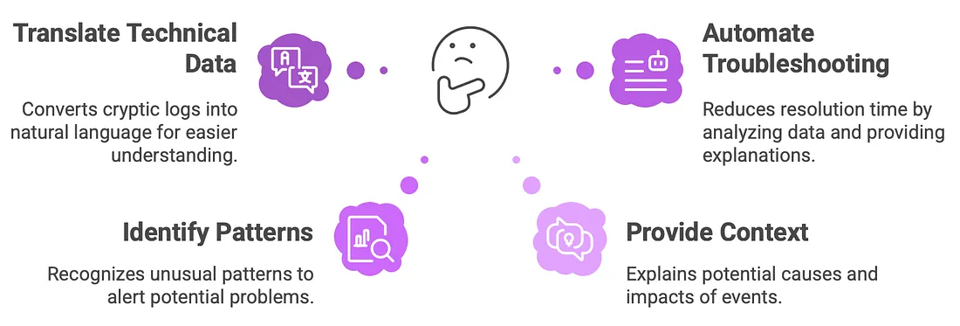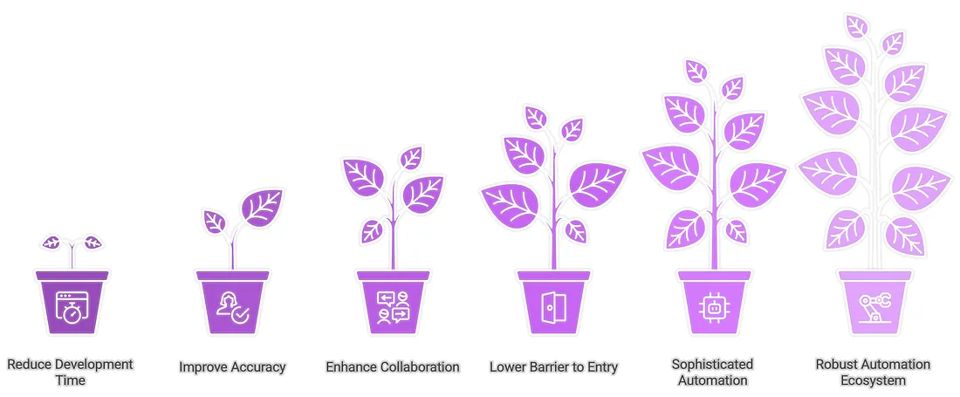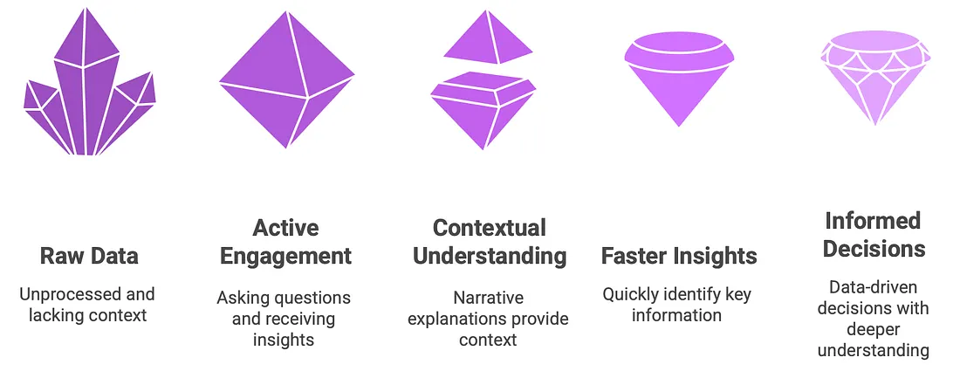If you run SAP systems, you already know the grind: monitoring queues, patching servers, restarting
jobs, checking dumps, writing the same reports again and again.
Now imagine if your automation stack didn't just do what you tell it to — it thought with you.
That's what happens when you mix AI reasoning with open-source automation tools.
It's not about replacing engineers — it's about freeing them up to think, design, and build like
artists again.
Let's explore five ways to “automate like an artist” inside your SAP landscape.
1. Turn Your Logs Into Stories
Logs are data. But AI can turn them into stories.
With tools like LangChain and Ollama, you can connect an AI model to your SAP logs,
ClickHouse metrics, or even CCMS alerts — and have it explain what's happening in natural language.
Instead of combing through a thousand lines of job logs, you could simply ask:
“Hey, summarize yesterday's background job failures and tell me what's different from the day
before.”
AI will read your logs, spot anomalies, and describe them conversationally:
“Three finance posting jobs failed due to short dumps (DBSQL_DUPLICATE_KEY_ERROR). These didn't
appear in yesterday's run. Recommend checking the new cost center validation routine.”
Suddenly, your technical data becomes an interactive narrative.
It's not just “monitoring” — it's storytelling.
And that's a creative leap.
Tools to try:
-
LangChain + Ollama (local LLM reasoning)
-
ClickHouse (log analytics)
-
Prometheus exporters for SAP metrics
2. Let AI Compose Your Playbooks
We've all done it: copy-pasted an old Ansible playbook and edited just enough to make it work.
Functional? yup for sure. Elegant? euh …. Not really.
Now imagine giving your AI assistant this prompt:
“Create a playbook that restarts the SAP app server gracefully, checks queue health, and
notifies me in Slack.”
Using LangChain connected to
AWX or
Ansible Tower, your AI can literally
generate and register that playbook for you.
You review, adjust, and approve — and boom, your next automation is ready.
No guessing syntax. No forgetting YAML indentation.
Think of it like
pair-programming with an artist who loves YAML.
Bonus: once that playbook runs successfully, you can store it in a Qdrant or Neo4j knowledge
base, so the AI remembers it for next time.
Tools to try:
-
AWX or Ansible Tower
-
LangChain or Code-LLMs (like StarCoder, Mistral, or Llama 3)
-
GitHub Copilot for YAML validation
3. Build Dashboards That Talk Back
Dashboards are great — until they turn into wallpaper.
You know the feeling: graphs everywhere, but nobody's actually reading them.
Now imagine a dashboard that talks to you, you open Grafana or Streamlit and type:
“Show me which SAP systems had the highest background job delays last week.”
Or even better:
“Which system caused the most SLA breaches this quarter, and why?”
Behind the scenes, your
AI layer queries
ClickHouse for metrics, merges them with
Neo4j dependency data, and generates both a chart and a natural-language explanation:
“System S4HANA-PRD caused 62% of SLA breaches due to long-running FI posting jobs. Most
correlated node: RFC destination FICO_SYNC.”
Now that's not a dashboard — that's a conversation
Tools to try:
-
Grafana or Streamlit for visualization
-
ClickHouse for fast analytics
-
Neo4j for dependency mapping
-
LangChain for narrative summaries
4. Automate Incident Response With Personality
Traditional automation handles incidents like a robot: “Alert. Fix. Done.”
But creative automation can make incident response human-friendly.
Picture this:
1. Kafka receives an alert from Zabbix — “HANA memory 95% on node 2.”
2. The MCP (Model Context Protocol) hands that context to your AI reasoning layer.
3. The AI figures out a likely root cause and triggers an AWX playbook to clean up temp tables.
When it's done, instead of just closing the ticket, it writes you a short, friendly summary in your
ops channel:
“✅ Issue resolved. HANA node 2 memory dropped from 95% to 68%.
Likely cause: unarchived temp tables in /hana/log.
Similar incident last month — consider automating weekly cleanup.”
That small touch of personality builds trust and clarity — two things engineers crave when AI joins
the team.
Tools to try:
-
Kafka for event streaming
-
MCP for AI orchestration
-
AWX / Ansible for action
-
LangChain for contextual summaries
5. Create a Self-Improving System
Now let's get truly artistic: automation that learns its own craft.
Every time your AI executes a fix — say, restarting a work process or adjusting a queue — it records
the outcome in
ClickHouse and
Qdrant.
Next time a similar issue pops up, it already knows what to do.
Over time, your SAP landscape builds what you might call a
digital intuition — a
feedback loop where each success refines the next decision.
That's where
Neo4j helps again: mapping which systems and processes are related.
Combine that with vector memory from
Qdrant, and suddenly your automation understands
patterns.
This is how you go from basic “if alert → then fix” scripts to a
self-healing, self-learning SAP
environment.
Or in human terms: automation that thinks like you — but never forgets.
Automation Is a Canvas, Not a Cage
Here s the shift in mindset:
Automation isn t about removing creativity. It s about
making space for it.
When the routine stuff — restarts, cleanups, health checks — runs itself, your brain is free for
higher-value work:
-
Designing new playbooks that predict problems, not just fix them.
-
Connecting operational data with business KPIs.
-
Exploring “what-if” scenarios across systems.
You stop being the firefighter and start being the architect.
That' s when you realize — automation can be a creative medium.








